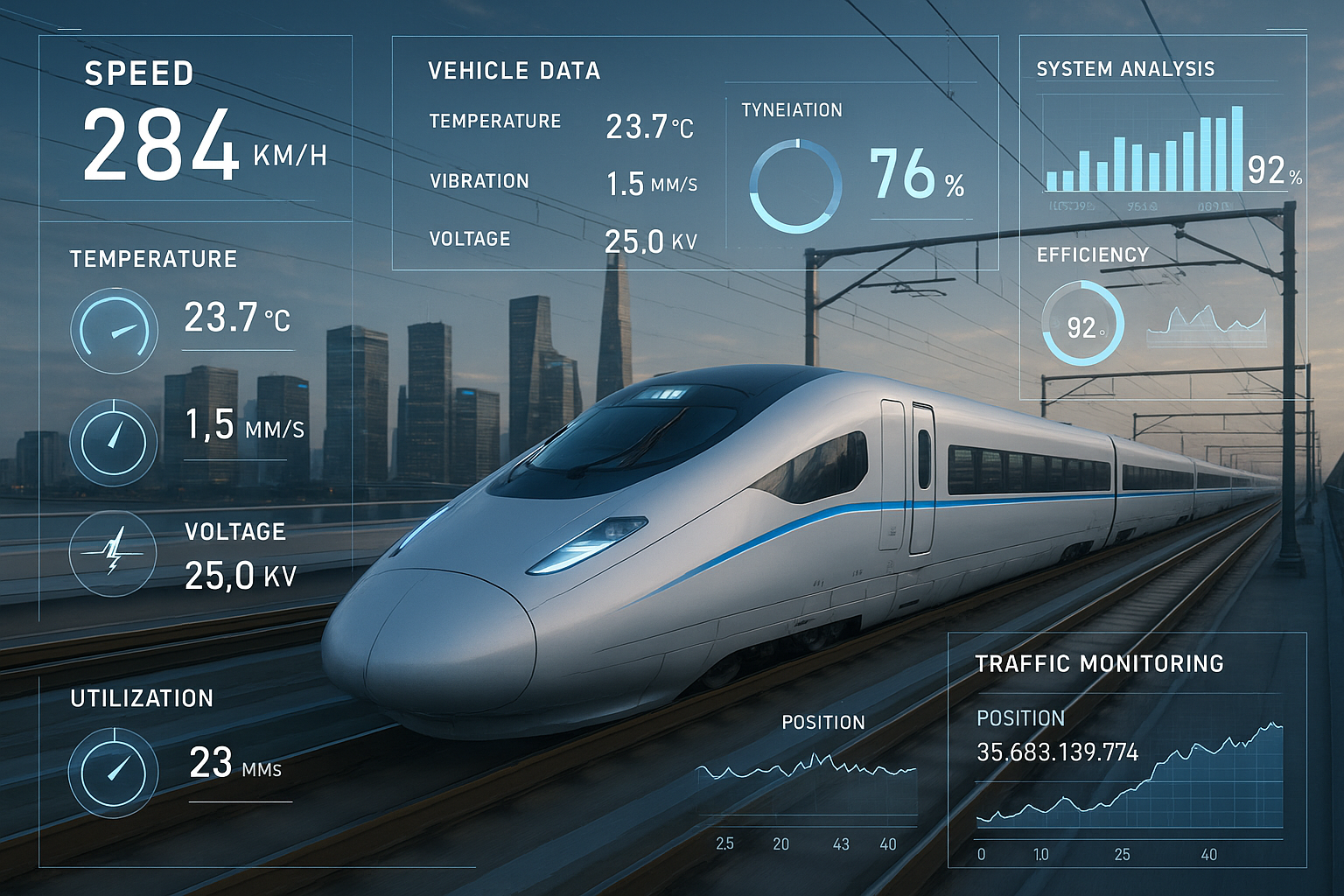The railway industry is transforming significantly by adopting Operational Digital Twins—virtual replicas of physical assets, processes, and systems that enable real-time monitoring, simulation, and optimization. By integrating data from various sources, these digital counterparts provide actionable insights to enhance efficiency, safety, and decision-making in railway operations.
Applications of Operational Digital Twins in Railways
Infrastructure Management:
- Digital twins offer comprehensive virtual models of railway infrastructure, including tracks, stations, tunnels, and bridges.
- These models facilitate proactive maintenance by simulating wear and tear, predicting potential failures, and scheduling timely interventions. This reduces downtime and extends asset lifespan.
- Real-time structural health monitoring ensures early detection of potential hazards, minimizing disruptions and maintenance costs.
Rolling Stock Monitoring:
- By creating digital twins of trains, operators can monitor real-time performance metrics such as engine health, brake systems, and HVAC conditions.
- This continuous monitoring allows for predictive maintenance, ensuring trains operate safely and efficiently while minimizing unexpected breakdowns.
- Sensors installed throughout the rolling stock enable condition-based maintenance, reducing unnecessary servicing and improving reliability.
Operational Efficiency:
- Simulating various operational scenarios enables railway companies to optimize scheduling, energy consumption, and resource allocation.
- Digital twins can model passenger flow, train frequencies, and network congestion, improving service reliability and customer satisfaction.
- AI-driven simulations help optimize train routing, reducing bottlenecks and ensuring smooth rail traffic flow.
Energy Optimization:
- Rail operators can leverage digital twins to analyze energy consumption patterns and implement energy-efficient driving strategies.
- Simulations help optimize acceleration and braking patterns, reducing power wastage and improving sustainability efforts.
- Integrating renewable energy sources and smart grid technologies enables better energy management and cost savings.
Passenger Experience Enhancement:
- Digital twins provide insights into station crowd dynamics, enabling real-time adjustments to passenger flow and reducing congestion.
- Enhanced service planning ensures more efficient train dispatching, minimizing wait times, and improving the commuter experience.
- Personalized travel recommendations and seamless ticketing integrations improve the passenger journey from start to finish.
- Onboard sensors track how full each carriage is, with station displays showing color-coded indicators of crowding levels. This allows passengers to choose less crowded carriages, improving comfort and balancing passenger distribution across the train.

Disaster Response and Resilience Planning:
- Simulating emergency scenarios helps railway operators prepare for natural disasters, accidents, and security threats.
- Digital twins evaluate evacuation procedures and optimize contingency plans for minimal service disruption.
- Real-time monitoring of weather patterns and environmental conditions ensures rapid response to potential threats.
Real-World Implementations
Germany's Rail Network:
- Germany is developing an AI-enabled digital twin of its extensive rail network, encompassing 5,700 stations and 33,000 kilometers (20,500 miles) of track.
- This initiative aims to enhance infrastructure planning, monitor asset health, and optimize train operations, contributing to a more efficient and reliable railway system.
https://www.gim-international.com/content/news/germany-builds-digital-twin-of-rail-network-in-nvidia-omniverse
Italy's Smart Railway System:
- In Italy, a digital twin encompassing over 16,000 kilometers of track, stations, tunnels, and bridges is utilized.
- This comprehensive model assists in infrastructure management, risk assessment, and decision-making processes, facilitating the development of a more intelligent and more responsive railway network.
https://www.nutanix.com/theforecastbynutanix/industry/how-digital-twin-technology-is-helping-build-a-smart-railway-system-in-italy
Canada Line in Vancouver:
- Vancouver's Canada Line rapid transit system employs a digital twin to optimize operations and maintenance.
- The system collects data on performance metrics such as swing time and motor current by installing sensors on critical assets like switches.
- This information builds a baseline for normal operations, enabling the identification of anomalies and scheduling of proactive maintenance to prevent service disruptions.
https://www.globalrailwayreview.com/article/139820/digital-twins-canada-trains/
Challenges and Considerations
While the benefits are substantial, implementing digital twins in railways presents challenges:
- Data Integration: Consolidating data from diverse sources and legacy systems into a unified digital twin requires robust integration strategies and may involve overcoming compatibility issues. Ensuring interoperability between different systems and data formats is a significant hurdle.
- Scalability: Developing digital twins for expansive and complex railway networks demands significant computational resources and scalable architectures to manage the vast amounts of data generated. Implementing solutions that can adapt to the growth of railway infrastructure is crucial.
- Data Accuracy and Timeliness: It is crucial to ensure that the digital twin accurately reflects the current state of physical assets. Discrepancies between the digital and physical twins can lead to erroneous insights and decisions. Real-time data synchronization and validation mechanisms are essential for maintaining reliability.
- Cybersecurity and Data Privacy: Digital twins rely on vast amounts of sensitive data, including train schedules, passenger information, and critical infrastructure details. Protecting this data from cyber threats and unauthorized access is a primary concern for railway operators. Implementing robust security measures, including encryption and access controls, is necessary to safeguard against cyber risks.
- High Initial Investment and Implementation Costs: While digital twins offer long-term cost savings, the upfront investment in technology, infrastructure, and personnel training can be substantial. Many railway operators may face budget constraints when adopting digital twin solutions.
- Workforce Adaptation and Training: The transition to digital twin technology requires railway staff to acquire new data analytics, simulation modeling, and digital system management skills. Providing adequate training and fostering a culture of digital innovation is essential to ensure a smooth implementation.
- Regulatory and Compliance Issues: Railway operations are subject to strict safety and operational regulations. Integrating digital twins into existing regulatory frameworks and ensuring compliance with industry standards is a complex challenge that must be carefully navigated.
Operational Digital Twins are revolutionizing the railway industry by providing dynamic, data-driven models that enhance infrastructure management, rolling stock monitoring, and operational efficiency. As demonstrated by implementations in Germany, Italy, and Canada, digital twins offer a pathway to more innovative, safer, and reliable railway systems. Addressing the associated challenges—data integration, scalability, cybersecurity, and workforce adaptation—will be key to unlocking their full potential and achieving transformative outcomes in rail transport.

